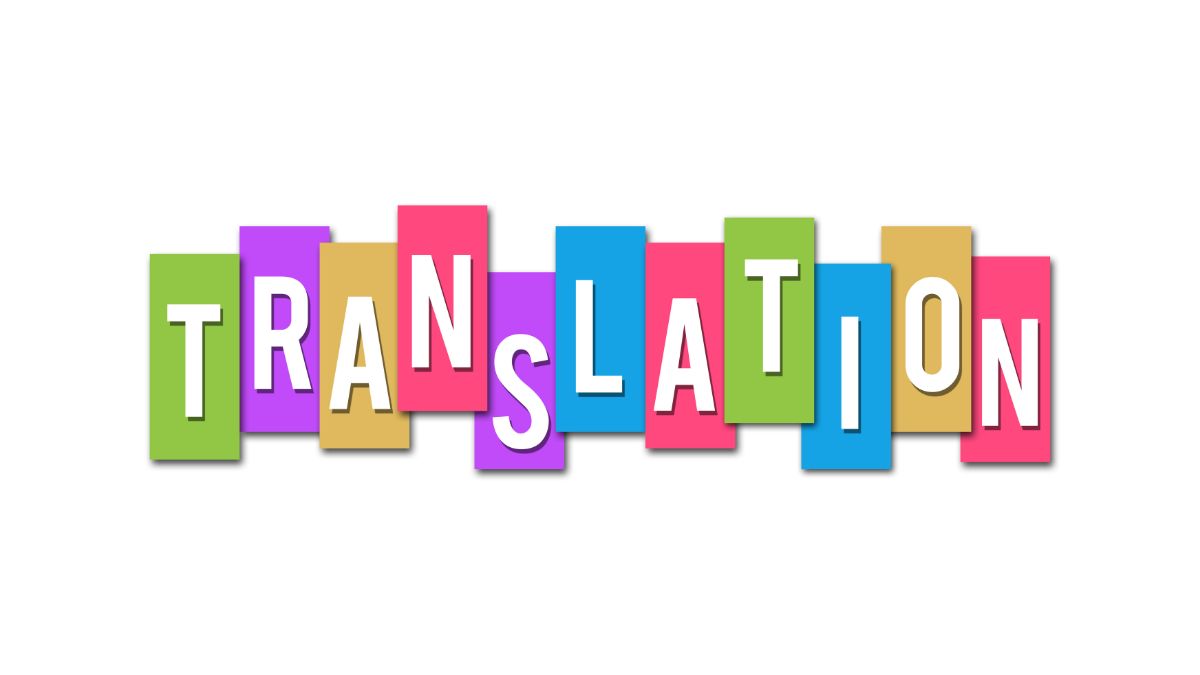Table of Contents
- Introduction
- The Global Translation Business Market Size and Values
- The Rise of the Translation Industry: A Historical Perspective
- Current Opportunities in the Translation Business Market
- Emerging Trends Shaping the Translation Business Market
- Challenges and Potential Solutions
- Case Studies: Success Stories in the Translation Business Market
- Conclusion
Introduction
The write-up discusses the translation business market, exploring interesting figures and covering opportunities and trends. The translation business market is vital in today’s increasingly globalized economy, as several examples in this article will prove.

As companies expand into new territories and populations grow more diverse, the demand for high-quality translation services continues to rise. This presents lucrative opportunities for businesses able to meet that demand.
In this writing, we’ll look in-depth at the evolution of the translation industry, current trends, future projections, challenges, case studies, and more. The aim is to provide readers with a comprehensive understanding of this complex market so they can make informed decisions about starting or growing a translation business.
We’ll begin by defining the translation business market and its various segments like document translation, interpretation services, localization, etc. Then, we’ll explore the industry’s growth over the years, catalyzed by key events that brought different languages and cultures together.
Current opportunities like globalization, increased content production, and a need for personalized translation will be discussed. However, emerging trends also present challenges that translation businesses must overcome. Later sections will suggest solutions and strategies based on real-world success stories.
By the end, you will have a solid grasp of where the translation market stands today and where it’s headed. The conclusion may inspire entrepreneurs, business owners, and investors to leverage these insights to capitalize on the immense potential in this industry. So, let’s dive in and illuminate the translation business market’s past, present, and future.
The Global Translation Business Market Size and Values
The global translation market is a dynamic and rapidly growing industry, with many fascinating facts, figures, and statistics highlighting its importance in today’s interconnected world.
The translation business market was valued at $39.37 billion in 2020 and is projected to reach $46.22 billion by 2028. The figures represent a compound annual growth rate (CAGR) of 2.07% between 2021 and 2028. This growth is largely driven by the increasing engagement of local markets into businesses, which has resulted in a growing demand for translation services.

The most translated languages globally are English, French, German, Russian, and Italian. Interestingly, the Bible, which can be read in nearly 650 languages, is considered the most translated publication, with at least one of its books translated into 3,225 languages.
The translation profession has a long history, beginning over 2,000 years ago. Today, there are approximately 640,000 translators worldwide, with 75% of them being self-employed or freelancers, according to ProZ’s State of Industry Report in 2020.
The global language services market was valued at $60.68 billion in 2022, with Europe owning nearly half the global language market. The United States also has a significant market size for translation services, valued at $6.6 billion.
The machine translation market is also experiencing considerable growth. Between 2016 and 2022, the US machine translation market grew from $400 million to $1.1 billion. Globally, the machine translation market was valued at $650 million in 2020 and is expected to reach $3 billion by 2027.
These facts and figures underscore the importance and growth of the global translation market, highlighting its critical role in facilitating communication and business in an increasingly interconnected world.
Based on the figures, the global translation business market has grown substantially in recent decades due to increased globalization, international trade, and the need for businesses to reach broader audiences.
The translation industry can be divided into several key segments:
- Document translation involves translating documents like contracts, reports, manuals, certificates, websites, and more from one language to another.
- Interpretation services – Providing real-time spoken or sign language interpretation during meetings, conferences, court hearings, medical appointments, etc.
- Localization – Adapting products like software, apps, websites, games, and marketing materials to suit a target local market’s language, culture, and preferences.
- Multimedia translation – Dubbing and subtitling TV shows, films, and other audio/video content into other languages.
- Machine translation – Using artificial intelligence (AI) and neural networks to translate large volumes of text automatically.
With the expansion of globalization, the translation industry is projected to grow steadily at an annual rate of over 5% in the coming years. This presents lucrative opportunities for established translation companies and new players looking to enter this dynamic market.
The Rise of the Translation Industry: A Historical Perspective
The translation industry has experienced remarkable growth over the past several decades, fueled by globalization, technological advances, and rising demand. Though translation and interpretation services have existed for centuries, the modern translation industry began to take shape in the years following World War II.
In the 1950s and 1960s, multinational companies started expanding internationally at an unprecedented rate. This increased the need for translation and localization services to adapt products and documentation for foreign markets.
The invention of the personal computer and the internet revolutionized the translation industry in the 1980s and 1990s. Translation memory tools allowed translators to store and reuse content for greater efficiency. Online dictionaries, glossaries, and forums enabled faster cross-border research and collaboration.
The rise of globalization further accelerated growth in the 2000s and 2010s. As international trade and outsourcing increased, so did the need for translation and interpreting services to bridge language and cultural barriers. The language services industry expanded into a multi-billion dollar global market.
Some key events that contributed to the growth of the translation industry include:
- The Nuremberg Trials of 1945-1946 highlighted the need for simultaneous interpretation.
- The founding of the International Federation of Translators in 1953.
- The ALPAC report 1966 found machine translation inadequate, emphasizing the ongoing need for human translators.
- With the passage of Title VI of the Civil Rights Act in 1964, the US required translation for minority language speakers.
- The development of translation memory technology in the 1980s.
- The rise of the internet and globalization in the 1990s and 2000s.
In summary, the translation industry has progressively grown over the past 70 years, shaped by technological innovation, globalization, and rising demand. This upward trajectory will continue as the world becomes more connected across languages and cultures.
Current Opportunities in the Translation Business Market
The translation industry is booming. With globalization connecting people across borders like never before, the demand for high-quality translation services continues to grow. This presents exciting opportunities for new players looking to enter the market and existing translation businesses aiming to expand their offerings.
Rising demand for translation services
As companies expand into new global markets, the need for translated content is greater than ever. Corporations require translation services from product manuals to marketing materials to communicate effectively with international customers and stakeholders. This demand spans virtually every industry, from technology to healthcare.
Increased need for niche language pairs
While historically, translation focused on common languages like English, Spanish, and French, globalization has created a demand for niche language pairs. Businesses expanding into emerging markets need translators for regional dialects and less widely spoken languages. Specializing in high-demand niche pairs can help translation companies differentiate themselves.
Opportunities in localization services
Beyond basic translation, businesses need assistance adapting content for specific cultures through localization. This involves adjusting text for regional dialects, formatting for local standards, and transcreating materials for relevance. Localization requires specialized skills, presenting an opportunity for translation companies to expand their service offerings.
Technology as an enabler
Advancements in translation technology and AI enable providers to scale operations and increase efficiency. While technology will not replace human translators, it can assist with repetitive tasks and quality assurance.
Adopting the latest advancements can help translation businesses grow without compromising quality. The translation industry is ripe with possibilities for both new and established players. By specializing in high-demand language pairs, expanding into emerging localization services, and leveraging technology, translation companies can capitalize on these opportunities for sustainable growth and profits.
Emerging Trends Shaping the Translation Business Market
The translation industry is rapidly changing, driven by exciting new technological developments. Machine translation and artificial intelligence are at the forefront, promising to increase efficiency and lower costs. At the same time, these innovations present challenges that the industry must adapt to.
The Rise of Machine Translation and AI
Powerful new machine translation engines like Google Translate and DeepL have improved translation quality while significantly reducing the time and cost of translations. With further advancements in neural machine translation and vast datasets, some experts predict that machine translation will rival human translation in the next 5-10 years.
In addition, AI is being applied in other innovative ways, like for quality evaluation of translations and to make the localization process more efficient. As technology evolves, AI-enabled tools will become indispensable for writing and translation businesses.
Impacts on the Translation Workflow
These new technologies are fundamentally altering the traditional translation workflow. While human translators remain critical, their role shifts towards post-editing machine-translation output. Translators must adapt to new tools and workflows centered around machine translation.
At the same time, these innovations allow translators to focus less on repetitive translation tasks and more on creative, high-value work. The human touch also remains essential for nuanced localization.
Adapting Business Models
Translation companies must re-evaluate their business models in light of these trends. Pricing strategies, production workflows, and resource allocation must be optimized for a technology-driven landscape. Companies that embrace change will gain a competitive edge.
But adaptation presents challenges, too. Investing in technology and retraining translators has a cost. Companies must distinguish between automation and retaining the human element that ensures quality.
Translation businesses can drive growth by leveraging the power of new technologies while keeping customers’ needs at the center. But thoughtful implementation will be key.
Challenges and Potential Solutions
The translation industry faces several challenges that businesses must navigate. Some of the most common issues include:
Finding and Retaining Talent
There is a shortage of qualified translators and interpreters in many languages and specialties. Competition for top talent is fierce, leading to high turnover rates. Businesses struggle to recruit and retain skilled linguists.
Managing Large Projects
Major translation and localization projects involve coordinating moving parts across languages, formats, and geographies. Keeping large projects on time and within budget can be extremely difficult.
Adapting to Technology
From computer-assisted translation (CAT) tools to machine translation, the translation industry is constantly evolving technologically. Businesses must continually invest in new tools and training to stay competitive.
Maintaining Quality
With tight deadlines and budgets, some businesses sacrifice quality to increase output. This leads to dissatisfied clients and damages the company’s reputation.
There are several strategies businesses can employ to address these challenges:
- Offer competitive compensation packages and career development opportunities to attract and retain top talent.
- Implement efficient project management workflows and provide ongoing staff training.
- Regularly evaluate new technologies and integrate the most useful ones into operations.
- Build a strong quality assurance process with multiple review stages.
- Foster a collaborative, feedback-friendly company culture focused on continuous improvement.
The translation industry is dynamic, and obstacles will arise, but forward-thinking companies can overcome challenges through innovation, adaptation, and a commitment to quality.
Case Studies: Success Stories in the Translation Business Market
The translation industry has seen tremendous growth and success stories over the years. Here are some inspiring examples of companies that have thrived by capitalizing on opportunities and overcoming challenges in the translation business market:
Lionbridge
Founded in 1996, Lionbridge has grown into one of the world’s largest translation companies, with over $600 million in annual revenue. They have succeeded by specializing in translation and localization services for the technology, e-commerce, gaming, and life sciences industries.
Lionbridge has leveraged advancements in translation technology and built a network of over 100,000 professional freelance translators to provide high-quality and cost-effective translation services. This has allowed them to acquire major clients like Microsoft, Amazon, Google, and JP Morgan.
TransPerfect
TransPerfect is the world’s largest privately-held language services provider, with over $600 million in annual revenue. The company’s growth strategy has focused on strategic acquisitions of smaller translation firms to expand their clientele and language pair offerings.
Today, TransPerfect provides services in over 170 languages and has over 5,000 full-time employees worldwide. The company has differentiated itself by offering various translation services, including software and website localization, interpretation, subtitling, and voice-overs. This diverse service offering has allowed TransPerfect to gain a competitive advantage.
RWS
RWS is a UK-based language services provider that has grown organically and through acquisitions. The early adoption of translation technology like CAT tools and machine translation is key to their success. RWS has improved translation speed and cost-efficiency by integrating MT with human translation.
The company has also focused on vertical specialization – particularly in the patent and life sciences fields. This domain expertise has allowed them to serve clients’ needs better.
These examples demonstrate how translation companies can thrive by capitalizing on market opportunities, leveraging technology, pursuing strategic growth, and developing specialized expertise. As the demand for translation continues rising, substantial opportunities remain for growth and success in this industry.
Conclusion
The translation business market has undergone remarkable growth over the past several decades. As discussed throughout this write-up, key drivers behind this expansion include globalization, technological advances, increased content production, and rising demand for multilingual services across sectors.
Based on the current trends and opportunities highlighted, we can expect the translation market to continue flourishing in the years ahead.
In the future, machine translation and AI will play an even greater role in augmenting human translation efforts. As neural machine translation and adaptive AI improve accuracy, they transform workflows and enable faster turnaround times. However, human translation will remain essential for high-quality, nuanced communication. The ideal scenario is increased collaboration between man and machine.
Remote work and cloud-based tools will also become more prevalent as businesses realize the benefits of location-independent talent pools and streamlined collaboration. This will require adaptation to virtual team management and a heightened focus on communication and project management systems.
Content will progressively shift towards multilingual publishing, expanding the need for translation and localization services. Businesses that proactively localize their content and digital experiences will gain a competitive edge in international markets.
Finally, industry consolidation and mergers & acquisitions activity will likely continue, with larger players acquiring niche and regional providers to expand their offerings. However, small and mid-sized translation businesses can thrive by capitalizing on regional domain expertise, language specialization, and personalized services.
The translation industry is poised for robust growth as globalization and digitization drive demand. While challenges remain, adopting strategies and seizing key opportunities can set businesses up for success. This blog post aimed to provide practical insights into navigating this complex but rewarding industry landscape.
